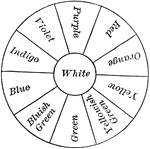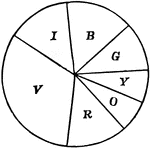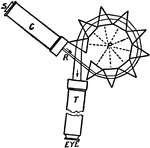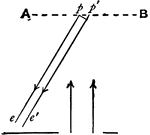Clipart tagged: ‘spectrum’

Complementary color wheel
"Any two colors standing opposite each other are complementary to each other. If such colors are blended,…

Newton disk
"Make a 'Newton disk', painting the prismatic colors in proper proportion as indicated." — Avery,…

Prism Spectroscope from the Late 19th Century
"...a tube with a slit at the further end through which the light enters, and at the other end a collimating…

Solar Spectrum
"Solar Spectrum.—If a ray, proceeding from the sun, be admitted into a darkened chamber, through…

Spectroscope
"C. Collimator; P, center of group of prisms; T, telescope; s, slit through which the ray of light enters,…

Direct Vision Spectroscope
"...an instrument which gives a spectrum when the source of the light is in a straight line with the…
Visible spectrum
"A spectrum of sunlight is crossed by dark lines, many hundreds of whcih have been counted and accurately…
